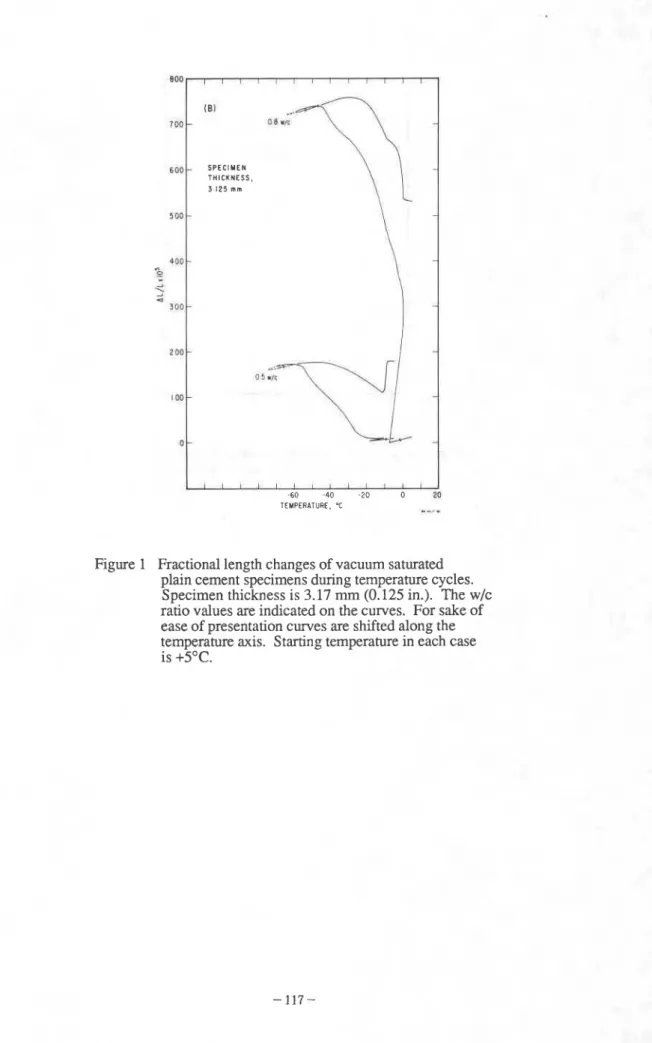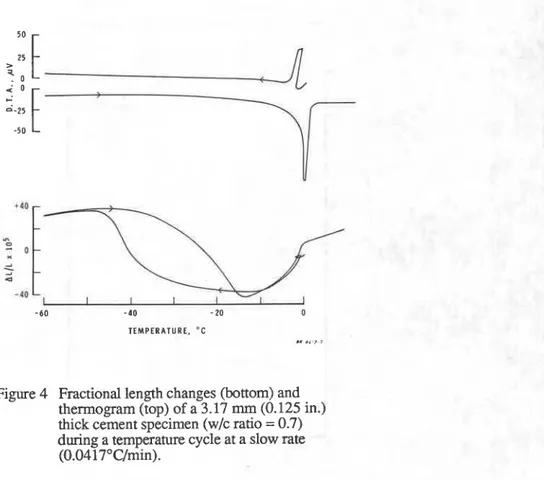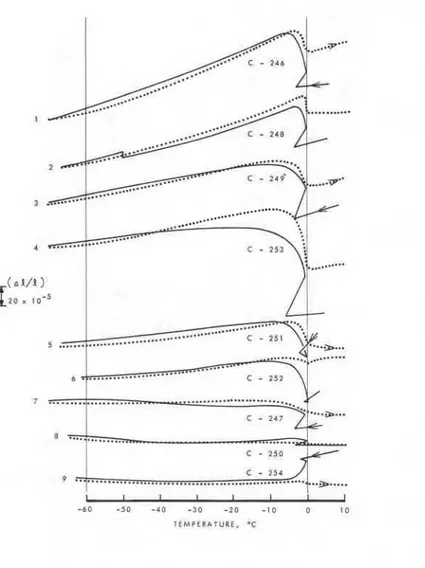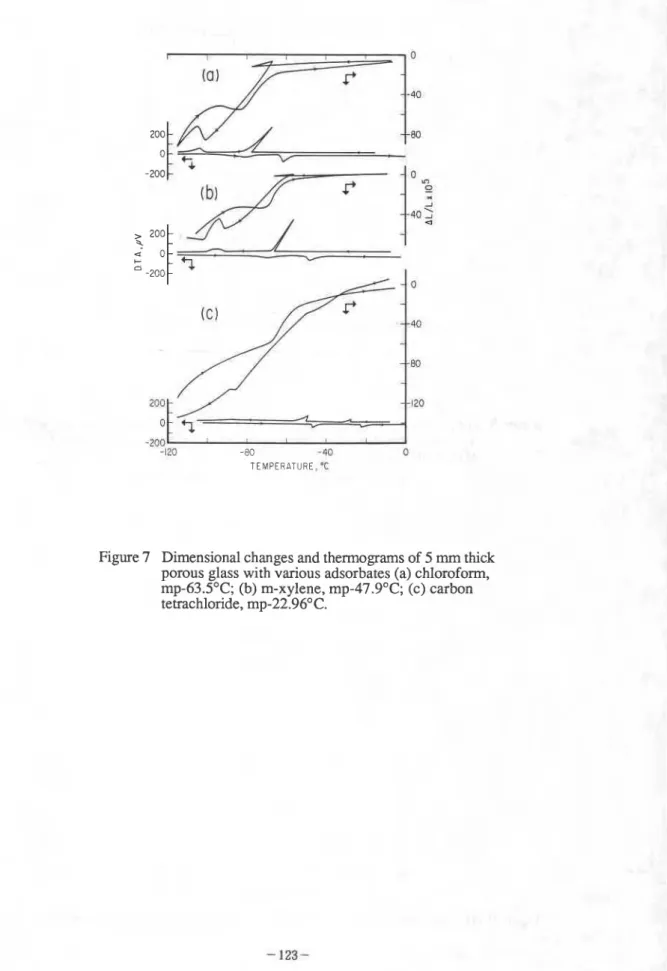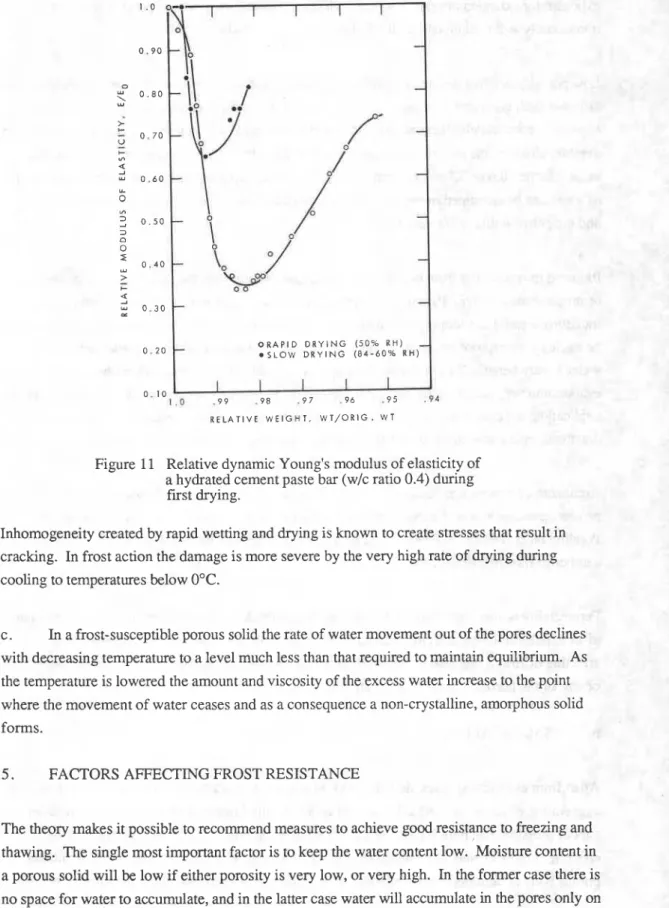READ THESE TERMS AND CONDITIONS CAREFULLY BEFORE USING THIS WEBSITE. https://nrc-publications.canada.ca/eng/copyright
Vous avez des questions? Nous pouvons vous aider. Pour communiquer directement avec un auteur, consultez la première page de la revue dans laquelle son article a été publié afin de trouver ses coordonnées. Si vous n’arrivez pas à les repérer, communiquez avec nous à PublicationsArchive-ArchivesPublications@nrc-cnrc.gc.ca.
Questions? Contact the NRC Publications Archive team at
PublicationsArchive-ArchivesPublications@nrc-cnrc.gc.ca. If you wish to email the authors directly, please see the first page of the publication for their contact information.
NRC Publications Archive
Archives des publications du CNRC
This publication could be one of several versions: author’s original, accepted manuscript or the publisher’s version. / La version de cette publication peut être l’une des suivantes : la version prépublication de l’auteur, la version acceptée du manuscrit ou la version de l’éditeur.
Access and use of this website and the material on it are subject to the Terms and Conditions set forth at
The mechanism of frost action in concrete - theory and practical
implications
Litvan, G. G.
https://publications-cnrc.canada.ca/fra/droits
L’accès à ce site Web et l’utilisation de son contenu sont assujettis aux conditions présentées dans le site LISEZ CES CONDITIONS ATTENTIVEMENT AVANT D’UTILISER CE SITE WEB.
NRC Publications Record / Notice d'Archives des publications de CNRC:
https://nrc-publications.canada.ca/eng/view/object/?id=e610feae-89af-4896-bceb-305d3ef112e6 https://publications-cnrc.canada.ca/fra/voir/objet/?id=e610feae-89af-4896-bceb-305d3ef112e6
- National Research Conseil national
S e r
1
Council Canada de recherches CanadaT H 1
N 2 1 d Institute for lnstitut de Research in recherche en n o *
1 5 9 5
Construction constructionc o 2
BLDG
The Mechanism of Frost Action in
Concrete
-
Theory and Practical
lmplica tions
by G.G. LitvanA N A L Y Z E D
Reprinted from
Proceedings of Workshop on Low Temperature Effects on Concrete, September 5-9, 1988
Sapporo, Hakkaido, Japan p. 115-134
(IRC Paper No. 1595)
NRCC 30420 N R C
-
CISTI I R C L I B R A R Y .11t!24
i!es
B I B L I O T H ~ Q U E
I R C C N R C - tCISTLes exp6riences &v&lent que la dquence de faits menant il la dbt6rioration du Mton lors des cycles de gel et de dbgel a pour cause l'incapacie de l'eau absorb& en surface, ou contenue dans les petits pores du Mton, de geler en raison de l'interaction du substrat et de l'eau. La pression de vapeur de l'eau non gelte contenue dans les pores, tr&s froide, ttant plus blevee que celle de la glace se muvant aux alentours, cette eau migre vers des endroits. comme les gros pores ou la surface extbrieure, oii elle peut geler. Ce processus ennaine, outre la famation de lentilles de glace et l'accumulation d'eau en surface, la dessiccation partielle du pore. La fissuration Asulte de la fonte et du gel des lentilles de glace ou d'une condition dans laquelle la redistribution de l'eau ne peut se produire.
On a utilisC ( tes mkthodes d'essai
permcrtant d'h
ntunadjwantservant
rntlange ~lascime- sat lirn Ar I*---:---- Jy-+--*. v e n t , des
ma+'^ dthode
er ue sur la
fc xime la
Pr ren d'un
THE MECHANISM OF FROST ACTION IN CONCRETE
-THEORY AND PRACTICAL IMPLICATIONS
GERARD G LITVAN
Senior Research Officer
Institute for Research in Construction
National Research Council of Canada
Ottawa,
K I A
0R6, Canada
Reprint from Proceedings
of
WORKSHOP ON LOW TEMPERATURE
EFFECTS ON CONCRETE
Canada/Japan
Science and Technology
Cooperative Agreement
September 5-
9, 1988 Sapporo, Hokkaido, JapanTHE MECHANISM OF FROST ACTION IN CONCRETE -
THEORY AND PRACTICAL IMPLICATIONS GERARD G. LITVAN
Senior Research Officer Institute for Research in Construction National Research Council of Canada
Ottawa, KIA 0R6, Canada
SUMMARY
Experiments indicate that the chain of events leading to deterioration of concrete in freezing and thawing cycles originate by the inability of water absorbed on the surface, or held in the smaller pores of concrete, to freeze due to the interaction between the substrate and water. Because the vapor pressure of the supercooled unfrozen water in the pores is greater than that of bulk ice in the surroundings, water migrates from the interior of the concrete to locations, such as large pores or outer surface, where it can freeze. This process results in partial desiccation of the pore in addition to ice lensing and accumulation of water on the surface. Cracking is the result of melting and freezing of the ice lenses or a condition in which redistribution of the water cannot take place.
This theory has been utilized for the development of test methods for the assessment of frost resistance of porous materials.
Based on these findings, it became possible to develop a novel admixture for the protection of concrete from damages of freezing and thawing. In place of current air entraining admixture, particulate matters with well defined pore structure are added to the plastic mix. The proposed method relies on the action of pre-formed air-voids instead of the formation of air-bubbles in the mixing process. By doing so, the principal cause for the limited reliability of air entrainment by conventional admixture is eliminated.
1. INTRODUCTION
Freezing and thawing is still of great concern in spite of dramatic advances in construction practices, and most notably by the introduction of air entrainment about 40 years ago.
The unacceptably high failure rate is to a large extent due to improper mix design or poor workmanship. But there are other problems, of which the most important are perhaps testing of the resistance to freezing and thawing of concrete and aggregates, and protection against the effect of de-icing salts. It seems that to achieve further progress in these areas a good understanding of the mechanism of freezing and thawing in porous materials is necessary.
Some aspects of the mechanism of freezing and thawing in concrete and their implications in practice are discussed in this paper..
2. THEORY
2.1 Characteristic Features of the Freezing and Thawing Phenomenon
1. The severity of the mechanical damage caused by freezing and thawing is directly proportional to the degree of saturation of the concrete or other porous solids.
In Fig. 1 the dimensional changes of fully saturated cement specimens (waterlcement (WIC) ratios 0.5 and 0.8; 3.17 mm (0.125 in) thick) during a cooling-warming cycle between +5 and -
70°C are shown [I]. The 0.8 W/C ratio specimen expanded 0.7% when fully saturated while a similar specimen contracted 0.12 % if conditioned at 84% RH (Fig 2). In a fully saturated state few systems can endure even a single freezing and thawing cycle without suffering injury.
2. Under comparable conditions the specimen with the largest minimum dimension suffers the greatest damage. It is well known that decreasing the size of aggregates increases their frost resistance.
A comparison of the length changes of the cement specimens of 1.27 rnm (Fig. 3) thickness with that of 3.17 mm thickness (Fig. 1) illustrates this point.
BOO
,
,
,
.
I . , , , S P E C I M E N T H I C K N E S S , 3 125 n m -60 -40 -20 0 20 TEMPERATURE, "C ...,*Figure 1 Fractional length changes of vacuum saturated plain cement specimens during temperature cycles. Specimen thickness is 3.17 rnm (0.125 in.). The w/c ratio values are indicated on the curves. For sake of ease of presentation curves are shifted along the temperature axis. Starting temperature in each case is +5OC.
.60 C3 20 0
TEMPERATURE. 'C
Figure 2 Fractional length changes of plain cement specimens equilibrated at 84% RH during temperature cycles. Rate of cooling is 20°C/h.
Figure 3 Fractional length changes of vacuum saturated plain cement specimens during temperature cycles.
Specimen thickness 1.27 mm (0.050 in.). The
W/C ratios are indicated on the curves. For sake of
ease of presentation the curves are shifted along the temperature axis. Starting temperature, in each case, was +5OC.
3 . Increasing cooling and warming rates result in increased mechanical damage. If the rate is
low even very vulnerable systems can go through freezing and thawing cycle without suffering damages. This is shown in Fig. 4 in which the dimensional changes of a cement specimen (WIC
= 0.7) indicate no lasting effect by the temperature cycle at 2S°C/h rate while a similar specimen shows considerable residual expansion at 20°C/h rate (Fig. 3).
T E M P E R A T U R E . ' C
a. ,' 7 >
Figure 4 Fractional length changes (bottom) and thennogram (top) of a 3.17 mrn (0.125 in.) thick cement specimen (w/c ratio = 0.7) during a temperature cycle at a slow rate
(0.0417"C/min).
4. Highly porous or very dense solids have good service records. Highly porous "no fines" concrete, or brick on one hand and dense marble on the other are examples of such materials. Portland cement concrete normally has intermediate porosity. The low W/C ratio pastes, less than 0.4, are durable under most circumstances but mixes of higher W/C ratio, though of medium porosity, are usually frost susceptible.
5 . Air entrainment, i.e. the creation of a pore structure that contains numerous larger pores at close intervals, has proved to be an excellent method to enhance the frost resistance of cement and concrete.
6 . The main characteristics of the freezing and thawing phenomenon appear to be common to
many types of porous solids. In Figure 5 the dimensional changes of porous 96% silica glass (2) and in Fig. 6 those of marble, limestone and sandstone during a cooling-warming cycle are shown. The essential features, viz. the existence of two freezing ranges both associated with expansion, hysteresis, residual expansion after completion of the cycle, sensitivity to sample thickness and cooling rates, are similar to those observed with cement paste.
TEMPERATURE, "C
Figure 5 Dimensional changes and thennogram of the porous 96% silica glass-water system: (a) 2 mm thick glass, water saturated, cooling rate, 0.25 OCImin; (b) 5 mm thick glass, water saturated, 0.25OC/min; (c) 5 mm thick glass, water saturated, 0.33OC/min.
Figure 6 Dimensional changes of stone samples in freeze-thaw cycle. (1) Briar hill sandstone,
(2) Colorado marble, (3) crab orchard sandstone,
(4) Minnesota limestone, (5) Indiana limestone
(buff) (6) Indiana limestone (grey), (7) Missouri marble, (8) Georgia marble, (9) Vermont marble.
7. When the pores of the solid contain organic liquid, the features of the freezing-thawing
phenomenon are similar to those observed with water. The length changes during low
temperature cycles of porous 96% silica glass saturated with various organic liquids are shown in
Figures 7 and 8 (2). Immersed in benzene, porous silica glass manifested 0.3% residual
I I I I
-120 -80 -40 o
TEMPERATURE, 'C
Figure 7 Dimensional changes and thermograrns of 5 mm thick porous glass with various adsorbates (a) chloroform,
mp-63S°C; (b) m-xylene, mp-47.9OC; (c) carbon
-2W 1
-t70 -80 -40 0
TEMPERATURE. 'C
Figure Dimensional changes and thermograms of a 5 mm thick porous glass with various adsorbates: (d) octanol, mp-16.7OC; (e) benzene, mp- +5.5OC; (f) cyclohexane, mp- +6.5OC. I I I I 400 - - - + !n 0 -
I:
200 - - \ 1 a - - 0 - - -00 -40 0 TEMPERATURE, "C8 . Repeated freezing and thawing under field conditions leads to desiccation and accumulation of the liquid outside of the body (lens formation) emanating from the pores.
9 . When a solution is contained in the pores the damage from freezing and thawing is much more severe compared to that found with systems saturated with a pure liquid such as water. For example, the residual expansion found with a 0.5 w/c ratio cement paste in a 5% sodium chloride solution was 1% (Fig. 10) [3] more than five times larger than in water, 0.18% (Fig. 3).
Fignre 10 Fractional length changes and thermograms of 0.5 w/c ratio cement pastes
impregnated with NaCl solutions (concentrations as indicated) during temperature cycles.
3 . MECHANISM
Frost action also occurs with organic liquids that normally contract on freezing, clearly indicating that the 9% increase in volume associated with the freezing of bulk water cannot by itself explain all the phenomena.
3.1
Absence of Crystallization of Water in PoresIt was found in isothermal adsorption studies that water is unable to crystallize in the confined spaces of small pores, a fact responsible for the chain of events leading to mechanical failure [2].
If a porous solid contains liquid water instead of ice at temperatures below O°C, complete saturation would take place only if the vapour pressure above the solid were to become equal to that of supercooled water. This cannot be realized in practice, however, because the vapour pressure of supercooled water is greater than that of ice; any attempt to elevate the vapour pressure above the level of that of ice will result in ice deposition outside the pore system of the solid. As a consequence, complete saturation of porous solids with water cannot be achieved at temperatures below 0°C. Furthermore, because the difference in the vapour pressures of supercooled water and of ice increases with decreasing temperature, the equilibrium water content of porous bodies falls short of complete saturation by an increasing margin as the temperature decreases.
3.2 Moisture Content Affected bv Tem~erature Change
The question arises: what happens if a porous solid, fully saturated at O°C, is cooled to lower temperatures? The water in the pores at, say, -2OC is in a liquid-like state and its vapour pressure is thus higher than that of ice in the environment. This non-equilibrium condition can, in the absence of freezing, be eliminated by one of the following processes:
a. Ideal case
In the absence of freezing (which would reduce the vapour pressure from that of undercooled water to that of ice) equilibrium can be, and often is, established in nature by a very simple mechanism: part of the water contained in the pores migrates to, and freezes at, locations where the effect of the surface is not felt, ie. in larger pores. Only enough liquid leaves the pores to put the fraction remaining in the pores under menisci having vapour pressure equal to that of ice. Because the free energy of a liquid is less if it has a concave instead of a planar surface, equilibrium can be established between the external ice and the unfrozen water, the vapour
pressure of which is reduced by menisus effect.
As a result of this process, the porous body becomes partially desiccated and consequently contracts; ice accumulates in the large pores and on external surfaces. Significantly, no
mechanical damage occurs. On further cooling to temperatures lower than -2OC, this sequence of events has to repeat itself because the difference between the vapour pressures of ice and
undercooled water increases with decreasing temperature. Thus, on cooling, the radius of curvature of the menisci decreases, the moisture content of the porous solid decreases, and the amount of external ice increases. According to the outlined mechanism, cooling of saturated porous bodies produces moisture transfer but not necessarily mechanical damage.
b
.
Practical caseIn nature and in laboratory experiments large cyclic changes are frequently imposed on the system and, although moisture redistribution takes place under the continuously increasing demand for mass transfer, the system is unable to change rapidly enough to maintain equilibrium. In the terminology of thermodynamics, the changes are not reversible.
Reversibility, or coping with the demand, is possible if (a) the amount of water to be
redistributed is small (that is, the porosity or the degree of saturation, or both, are low), (b) the cooling rate is low, (c) the permeability of the system is high, (d) the migratory path is short, and (e) the mobility of the water is high, that is, the viscosity is low or the temperature is high. It is known from field experience and laboratory studies that under these conditions damage is, indeed, minimal. In contrast, if one or several of the parameters are unfavorable, mass transfer does not take place at the required rate and mechanical damage ensues.
4. MECHANICAL DAMAGE
Solids can suffer mechanical damage in non-equilibrium freeze-thaw cycles by one or several of the following mechanisms:
a. It follows from the described theory that if, on cooling, the porous body loses water to the environment, the reverse process will take place on warming: water migrates back to the interior from the external surface and cracks. Whether all the water can be re-absorbed before the next cooling period depends on various factors, but usually the re-saturation process is
incomplete. The water accumulated and remaining in the cracks freezes in the next cooling phase and the accompanying 9% volume increase. The space so enlarged will attract more water from the interior in subsequent cycles inflicting further damage. This mechanism can account for the destructive effect of repeated freeze-thaw cycling.
b. The volume of porous solids containing adsorbed water is affected by environmental changes. For example, cooling causes shrinkage of the solid as well as reduction of the moisture content. If cooling is rapid significant temperature and moisture gradients are created that create considerable stress.
In Fig. 11 the changes in the relative dynamic modulus of elasticity of a water saturated cement prism (2.5 by 2.5 by 2.5 cm, w/c ratio 0.4) on exposure at room temperature to (a) 50% RH or to (b) 84 and subsequently 66% RH are shown. The modulus was determined according to ASTM C215-60(76), Test for Fundamental Transverse, Longitudinal and Torsional Frequencies of Concrete Specimens.
It can be seen that during rapid drying the dynamic modulus of elasticity falls to 33% of its original value; on slow drying the minimum value of the modulus is higher, 65% that of the initial value as is transient decrease of the modulus of elasticity. It should be noted that one of the characteristic features of the freezing-thawing phenomenon is the dependency of the severity on the cooling rate. According to the described theory cooling results in desiccation and the significant effect of drying rate on the impairment of mechanical properties is consistent with the theory. The change in the modulus cannot be attributed to shrinkage or loss of water because similar transient reduction occurs also during wetting when the system expands.
0 . l o
1 . O . 9 9 . 9 8 . 9 7 . 9 6 . 9 5 . V d
R E L A T I V E W E I G H T , W T / O R I G . W T
Figure 11 Relative dynamic Young's modulus of elasticity of a hydrated cement paste bar (wlc ratio 0.4) during first drying.
Inhomogeneity created by rapid wetting and drying is known to create stresses that result in cracking. In frost action the damage is more severe by the very high rate of drying during cooling to temperatures below 0°C.
c. In a frost-susceptible porous solid the rate of water movement out of the pores declines
with decreasing temperature to a level much less than that required to maintain equilibrium. As the temperature is lowered the amount and viscosity of the excess water increase to the point where the movement of water ceases and as a consequence a non-crystalline, amorphous solid forms.
5. FACTORS AFFECTING FROST RESISTANCE
The theory makes it possible to recommend measures to achieve good resistance to freezing and thawing. The single most important factor is to keep the water content low. Moisture content in
a porous solid will be low if either porosity is very low, or very high. In the former case there is
exposure for extended periods to a very high relative humidity and most pores will empty immediately as the relative humidity falls slightly below 100%.
Low porosity in concrete can be achieved by keeping the w/c ratio low. Concrete with a 0.4 w/c ratio has such good frost resistance that the need for air entrainment is questioned by some experts. Unfortunately, it cannot be said that concrete made with a very high wlc ratio is also durable; although the porosity increases very significantly, it does not reach a sufficiently high value. In fact, 0.6 or 0.7 w/c concrete is highly frost susceptible because considerable amounts of water can be contained in the pore system while the average pore diameter is still quite small and the permeability is not very high.
Reduced moisture loss from porous bodies can lead to a high degree of saturation and, because of this, to frost damage. Painting a concrete or brick wall with a "non-breathing" oil paint can transform a well functioning structure to one with a durability problem. Special mention has to be made of waterproofers, sealers, and impregnants. Reduction of porosity and a ingress of water is very beneficial in principle. Often, however, these agents also reduce the rate of
evaporation very substantially while not preventing all water from entering the network. Silicone application, for example, prevents rain penetration but not moisture condensation resulting in a drastically reduced water loss and elevated water content and, thus, frost damage.
Architects, engineers and designers should recognize that frost damage can be minimized by providing means to avoid accumulation of water in roads, building walls, and bridge decks. Ponding on horizontal surfaces should be avoided by appropriate detailing such as slopes, camber or flashing, drains, etc.
Permeability is also important since it affects the accumulation of water before freezing, the rate of its expulsion during freezing, and therefore, frost resistance itself. Material properties affecting diffusion rate also influence frost action. Among these, the length of the diffusion path or size of the porous solid is of great significance.
6. SALT SCALING
Apart from exceptional cases, de-icing salts do not attack concrete through chemical action. The aggravating effect of de-icing salts on frost action results from the fact that solutions have lower vapour pressure than pure liquids; at a given relative humidity, therefore, saturation of the concrete is more closely approached than without solutes. Conversely, if concrete or another porous body is saturated with a solution rather than pure water, desiccation or evaporation will
commence at lower relative humidity than would be the case with pure water in the pores. For example, a porous solid containing a 26% NaCl solution will not lose any liquid, remaining saturated until after the relative humidity falls below 77%. The importance of the degree of saturation in frost action has already been emphasized. High moisture content can thus account for the aggravating effect of de-icing salts.
7 . AIR ENTRAINMENT
The method of improving frost resistance of concrete by entrained voids in the paste has been used with great success for many decades. The protective effect can be attributed to the provision of a reservoir for the excess water, eliminating the need for the water to migrate to the external surfaces or, conversely, avoiding the accumulation of excess water in the pores. The voids obviously have to be distributed evenly and to be present in large numbers.
The performance of concrete in freezing and thawing containing a high range water reducer
I
admixture raises questions concerning the type and size of voids required for protection. In such1
concrete a 0.2mn
spacing factor is very difficult to achieve; despite this apparent shortcoming,1 the freeze-thaw resistance very significantly better than expected on the basis of paste
characteristics [4].
Analysis of the pore structure showed the presence of a large number of relatively small pores (0.8 to 2 pm d i m ) in air-entrained pastes containing high range water reducer (Fig. 12). This finding suggests that for freeze-thaw protection pores of relatively small size if present in large numbers are sufficient. Air voids of large sizes in the 30 to 500 pm range which are
conventionally considered as air-entrained may not be essential [4]. In fact because of their large size at a given air content they cannot be as closely spaced as smaller sized pores.
P O R E D I A M E T E R , pm
Figure 12 Pore size distribution of specimens determined by mercury porosimetry. Plain mixes are drawn with
solid lines, air entrained mixes are represented by
8 . AIR ENTRAINMENT BY POROUS PARTICULATE ADMIXTURE
Air entrainment is normally effected by the addition of a surface active agent to the plastic mix.
The great disadvantage of this method is that the success of the operation depends on many environmental factors such as temperature, length and rate of mixing, impurities in the mix, the shape of sand particles, etc. As the spacing factor of the plastic mix cannot be measured, uncertainty exists concerning of the quality of the concrete at the time of placement in @e form.
By the time deficiencies can be determined it may be too late for corrective action.
The addition of preformed voids in the form of particles overcomes these difficulties. Porous particulates with at least 30 per cent total porosity and pore diameters mainly between 0.8 and 2 pm have been found to enhance the freeze-thaw resistance of hydrated portland cement and mortar [5,6]. It should be mentioned that the effective particulates had pores with diameters similar to those found in large numbers in air-entrained pastes.
9. TESTING
The performance of a given concrete cannot be predicted unless the characteristics of the
environment to which it willbe exposed are known. The term "frost resistant concrete" is
somewhat misleading because it implies that the concrete will withstand the action of freezing and thawing under any condition. It should only be interpreted to mean that under the anticipated
service conditions it willnot be damaged by freezing and thawing.
Testing, therefore, requires an estimate of the most important service conditions, particularly the
moisture content at the time of freezing. Given its wide variation, the degree of saturation at freezing is the major source of error in the assessment of frost resistance.
REFERENCES
(1) Litvan, G., "Phase Transitions of Adsorbates
IV.
Mechanism of Frost Action in Hardened Cement Paste", J. Am. Ceram. Soc.55
(I), 1972, pp38-42.(2) Litvan, G., "Phase Transition of Adsorbates III. Heat Effects and Dimensional Changes in
Nonequilibrium Temperature Cycles", J. Coll. Interface Sci.,
38
(I), 1972, pp75-83. 3. Litvan, G., "Phase Transitions of Adsorbates VI. Effect of De-Icing Agents on the Freezing of Cement Paste", J. Am. Ceram. Soc.58
(1-2), 1975, pp26-30.4. Litvan, G., "Air Entrainment in the Presence of Superplasticizers", Am. Concr. Inst. J. July/August 1983, pp326-33 1.
5. Litvan, G . and P.J. Sereda, "Particulate Admixture for Enhanced Freeze-Thaw Resistance of Concrete", Cem. Concr. Res.
8
(I), 1978, pp53-60.6. Litvan, G., "Further Study of Particulate Admixtures for Enhanced Freeze-Thaw Resistance of Concrete", Am. Concr. Inst. J. SeptemberIOctober 1985, pp724-730.
This paper is being distributed in reprint form by the Institute for Research in Construction. A list of building practice and research publications available from the Institute may be obtained by writing t the Publications Section, Institute for Research in Construction, National Research Council of Canada, Ottawa, Ontario, KIA OR6.
Ce document est distribud sous forme de tid-&-pan par 1'Institut de recherche en construction. On peut obtenir une liste des publications de 1'Institut portant sur les techniques ou les recherches en matibre de batiment en krivant
